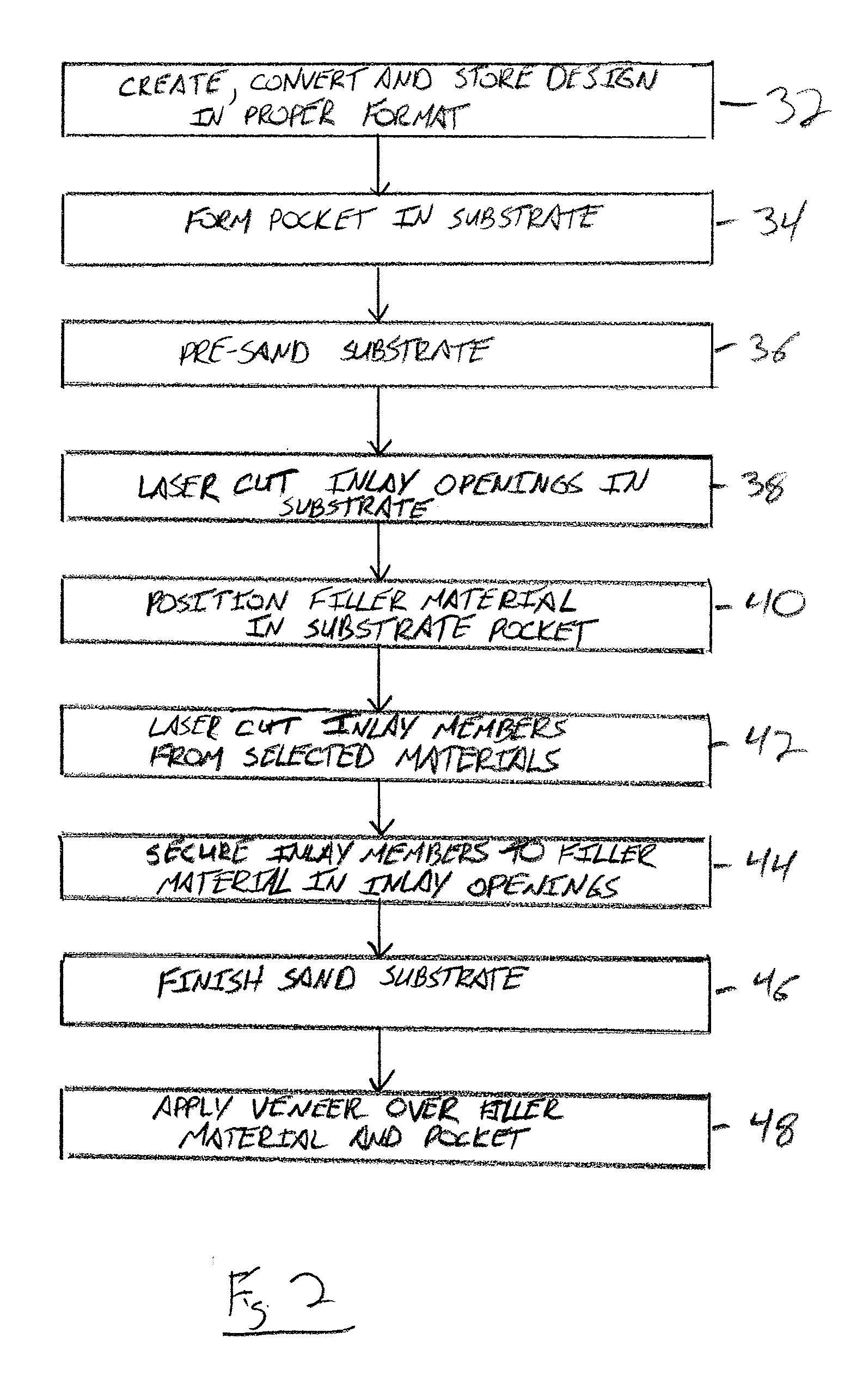Inlaid Decorative Panels
a technology of decorative panels and inlay materials, applied in the field of decorative panels, can solve the problems of affecting the appearance of decorative panels, significant limitations on the stability of inlay materials positioned within the opening, and unsuitable for other uses than flooring
- Summary
- Abstract
- Description
- Claims
- Application Information
AI Technical Summary
Benefits of technology
Problems solved by technology
Method used
Image
Examples
Embodiment Construction
[0016]With reference now to the drawing figures in which like reference numerals designate like parts throughout the disclosure, a decorative panel constructed according to the present invention is indicated generally at 10 in FIG. 1. The panel 10 includes a substrate 12 formed of any suitable material, such as wood, stone, metal, or plastic, among others. The panel 10 can be designed for use in a flooring surface, as a step, a door, or as a cabinet panel, among other potential uses for the panel 10.
[0017]The substrate 12 for the panel 10 includes one or more inlay openings 14, 16 formed therein in which are positioned a number of inlay members 18-24, which may also have inlay openings formed in them. The substrate 12 may also have various other decorative features (not shown) formed on the substrate 12, such as beveled edges (not shown), glass panels (not shown) or carved designs (not shown), among others. The inlay openings 14, 16 extend partially through the substrate 12 from a f...
PUM
| Property | Measurement | Unit |
|---|---|---|
| Thickness | aaaaa | aaaaa |
| Size | aaaaa | aaaaa |
| Area | aaaaa | aaaaa |
Abstract
Description
Claims
Application Information
 Login to View More
Login to View More - R&D
- Intellectual Property
- Life Sciences
- Materials
- Tech Scout
- Unparalleled Data Quality
- Higher Quality Content
- 60% Fewer Hallucinations
Browse by: Latest US Patents, China's latest patents, Technical Efficacy Thesaurus, Application Domain, Technology Topic, Popular Technical Reports.
© 2025 PatSnap. All rights reserved.Legal|Privacy policy|Modern Slavery Act Transparency Statement|Sitemap|About US| Contact US: help@patsnap.com



